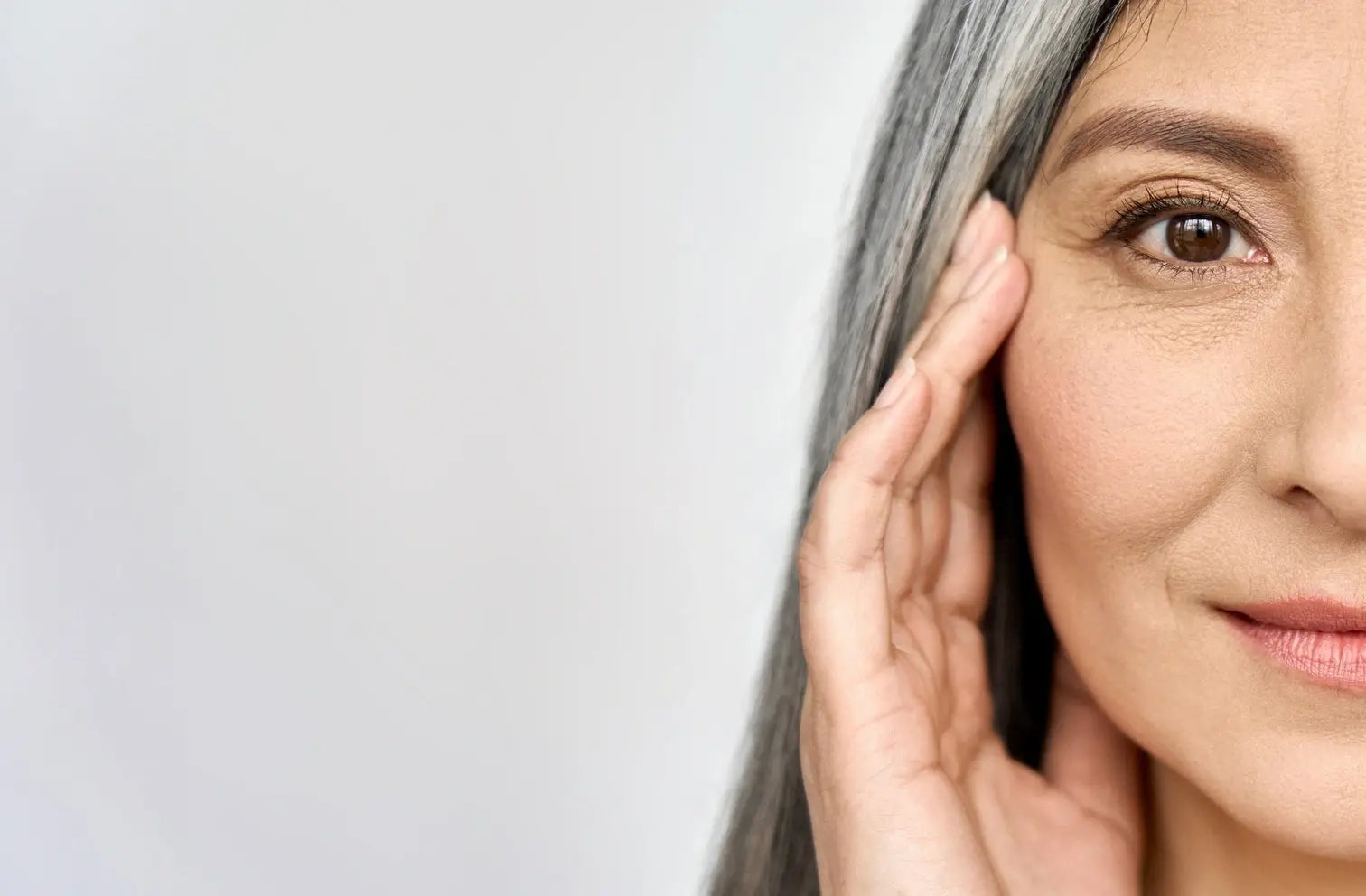What happens to skin as we grow older?
What happens to skin as we grow older?
What are the 3 main visible signs of aging?
What are the 3 main visible signs of aging?
How do you know if your skin is aging?
How do you know if your skin is aging?
What are some ways to slow the effects of skin aging?
What are some ways to slow the effects of skin aging?
At what age does skin start to thin?
At what age does skin start to thin?
How do you tell if your skin has lost its elasticity?
How do you tell if your skin has lost its elasticity?
Can skin's elasticity be restored?
Can skin's elasticity be restored?
- Our skin has tremendous protective and homeostatic capabilities that progressively wane due to damage and natural degradation during aging.
- Collagen and elastin within the skin barrier provide strength, elasticity, and texture but can be compromised due to external exposures such as UV rays, pollution, pathogens, and physical dangers.
- A compromised skin barrier and changes to the underlying fat and bone can reduce the skin’s function and structure, ultimately leading to dry and fragile skin with a saggy, transparent appearance.
- Skin aging can be delayed by the use of sun protection, a healthy diet, a proper cleaning and moisturizing regimen, and other lifestyle adjustments.
- Additionally, scientists at OneSkin have developed a novel peptide, which is scientifically proven to reverse the effects of aging in the skin at the cellular level. The OS-01 peptide is able to promote the production of collagen and hyaluronic acid to improve skin texture, thickness, and reduced visible signs of aging. [12, 13, 14]
- Our skin has tremendous protective and homeostatic capabilities that progressively wane due to damage and natural degradation during aging.
- Collagen and elastin within the skin barrier provide strength, elasticity, and texture but can be compromised due to external exposures such as UV rays, pollution, pathogens, and physical dangers.
- A compromised skin barrier and changes to the underlying fat and bone can reduce the skin’s function and structure, ultimately leading to dry and fragile skin with a saggy, transparent appearance.
- Skin aging can be delayed by the use of sun protection, a healthy diet, a proper cleaning and moisturizing regimen, and other lifestyle adjustments.
- Additionally, scientists at OneSkin have developed a novel peptide, which is scientifically proven to reverse the effects of aging in the skin at the cellular level. The OS-01 peptide is able to promote the production of collagen and hyaluronic acid to improve skin texture, thickness, and reduced visible signs of aging. [12, 13, 14]
- https://www.ncbi.nlm.nih.gov/pmc/articles/PMC1606623/
- https://www.ncbi.nlm.nih.gov/pmc/articles/PMC7859014/
- https://www.mdpi.com/2079-9284/5/1/14
- https://www.ncbi.nlm.nih.gov/pmc/articles/PMC3583886/
- https://pubmed.ncbi.nlm.nih.gov/16221138/
- https://www.ncbi.nlm.nih.gov/pmc/articles/PMC3840548/
- https://pubmed.ncbi.nlm.nih.gov/30052192/
- https://link.springer.com/referenceworkentry/10.1007/978-3-662-47398-6_4
- https://www.ncbi.nlm.nih.gov/pmc/articles/PMC7146365/
- https://pubmed.ncbi.nlm.nih.gov/27144559/
- https://www.ncbi.nlm.nih.gov/pmc/articles/PMC1151092/
- Based on data from clinical studies and/or lab studies conducted on human skin samples, 3D skin models, and skin cells in the OneSkin lab. Explore more at oneskin.co/claims
- Zonari, A., et al. Senotherapeutic peptide treatment reduces biological age and senescence burden in human skin models. Npj Aging, 9(1), 1-15. 2023.
- Zonari A., et al. Double-blind, vehicle-controlled clinical investigation of peptide OS-01 for skin rejuvenation. J Cosmet Dermatol. 2024.
- https://www.ncbi.nlm.nih.gov/pmc/articles/PMC1606623/
- https://www.ncbi.nlm.nih.gov/pmc/articles/PMC7859014/
- https://www.mdpi.com/2079-9284/5/1/14
- https://www.ncbi.nlm.nih.gov/pmc/articles/PMC3583886/
- https://pubmed.ncbi.nlm.nih.gov/16221138/
- https://www.ncbi.nlm.nih.gov/pmc/articles/PMC3840548/
- https://pubmed.ncbi.nlm.nih.gov/30052192/
- https://link.springer.com/referenceworkentry/10.1007/978-3-662-47398-6_4
- https://www.ncbi.nlm.nih.gov/pmc/articles/PMC7146365/
- https://pubmed.ncbi.nlm.nih.gov/27144559/
- https://www.ncbi.nlm.nih.gov/pmc/articles/PMC1151092/
- Based on data from clinical studies and/or lab studies conducted on human skin samples, 3D skin models, and skin cells in the OneSkin lab. Explore more at oneskin.co/claims
- Zonari, A., et al. Senotherapeutic peptide treatment reduces biological age and senescence burden in human skin models. Npj Aging, 9(1), 1-15. 2023.
- Zonari A., et al. Double-blind, vehicle-controlled clinical investigation of peptide OS-01 for skin rejuvenation. J Cosmet Dermatol. 2024.



